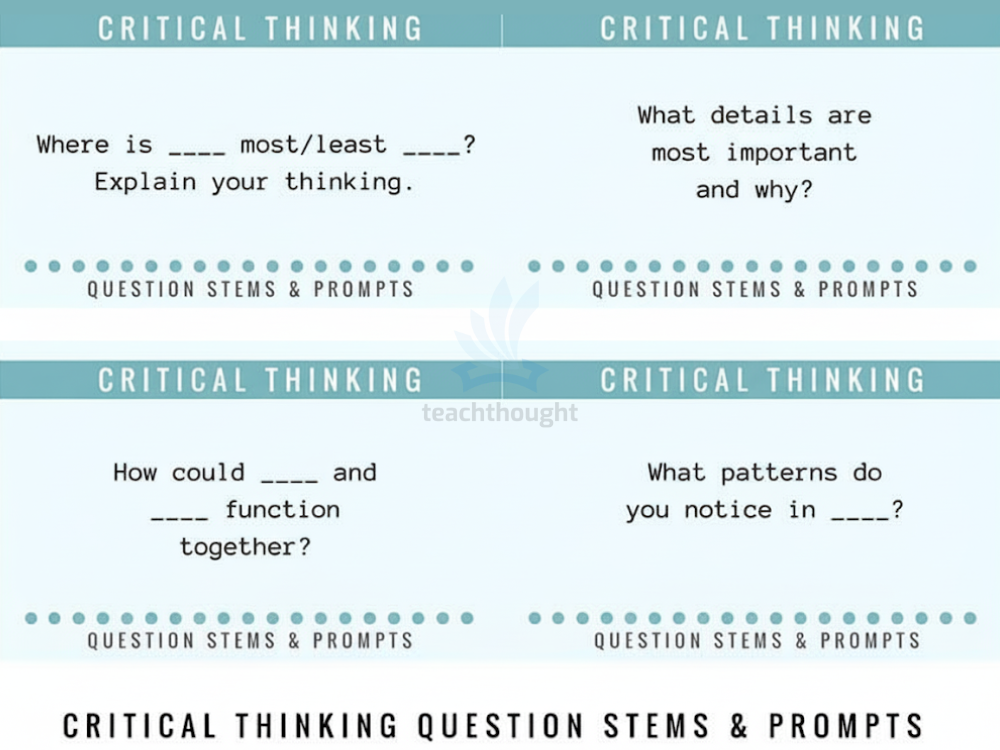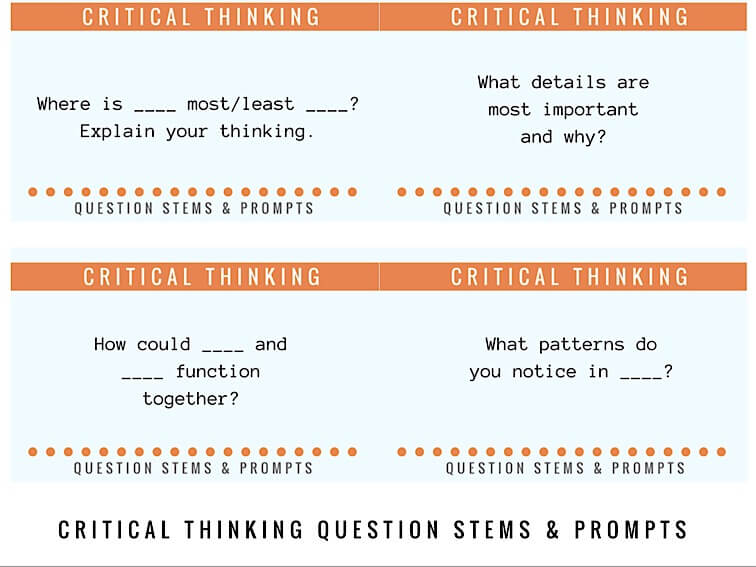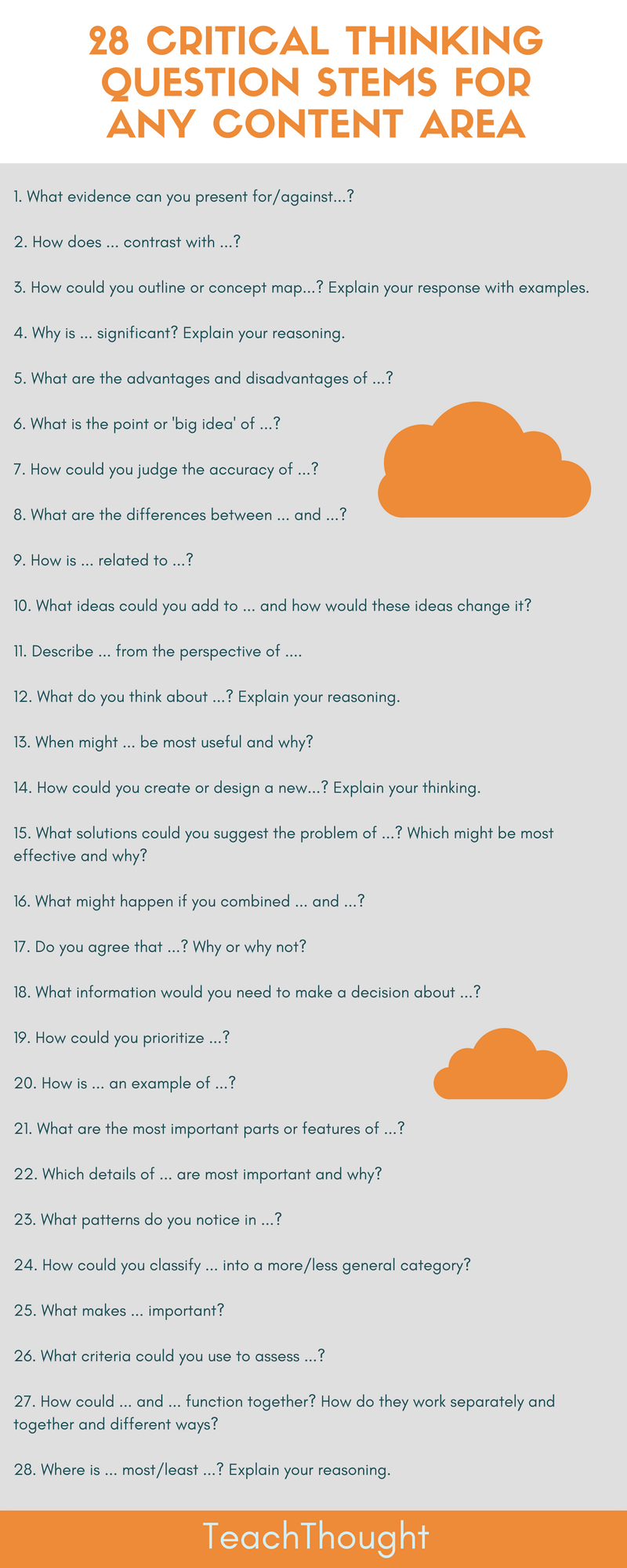by Staff
Critical thinking is not a competence, neither the knowledge of the content nor even the evidence of understanding.
Although it implies and requires these ideas, critical thinking is also a state of mind – a will and a tendency to sit with an idea and to “fight wonderfully”.
In critical thinking, there is no conclusion; It is a constant interaction with changing circumstances and new knowledge that allows a broader vision that allows new evidence that recruits the process. Critical thought has the basis of raw emotion and tone. Intention.
The purpose of these stems is to help students practice this slippery “skill”. By having dozens of questions written quite generally to be largely applicable, but with an inherent rigor which challenges students to think, the ability to practice thought is always available.


Critical thinking cards
In addition to the text and cards, we included a graph below. You can also Buy them in the card format To be printed and used immediately in your class, a sample you can see below.
By making them cards, they are not only easier to “keep around” – on your desk, on a shelf in a post area, or even copied and given to students – but more importantly, a significant reflection can be part of your daily routines. Invites to writing, reading circles, Socratic discussions and even more benefit from critical thinking, and providing students with stems is a way to support them as their confidence develops and their habits develop as thinkers develop.


28 The question of critical thinking results from any field of content
1. What proof can you present for / against …?
2. How… does it contrast with…?
3. How could you describe or the concept card…? Explain your answer with examples.
4. Why is… significant? Explain your reasoning.
5. What are the advantages and disadvantages of…?
6. What is the point or the “big idea” of …?
7. How could you judge the accuracy of…?
8. What are the differences between … and …?
9. How… is it linked to …?
10. To what ideas could you add … and how would these ideas change it?
11. Describe… from the point of view of….
12. What do you think of…? Explain your reasoning.
13. When could be very useful and why?
14. How could you create or design a new one…? Explain your reflection.
15. What solutions could you suggest the problem…? Which could be the most effective and why?
16. What could happen if you combine … and …?
17. Do you agree that…? Why or why not?
18. What information would you need to make a decision …?
19. How could you prioritize…?
20. How is… an example of…?
21. What are the most important parts or characteristics of …?
22. What details of… are the most important and why?
23. What models do you notice…?
24. How could you classify… in a more / less general category?
25. What is it … important?
26. What criteria could you use to assess…?
27. How… and… operate together? How do they work separately and together and different ways?
28. Where is … the most / the least …? Explain your reasoning.


28 The question of critical thinking results from any field of content



